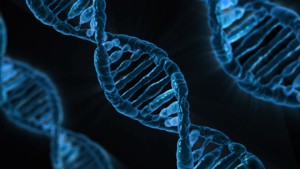 DNA has becomes an essential part of many court cases since the introduction of DNA evidence during the 1980’s. DNA evidence is used to exonerate those wrongfully imprisoned and to convict those who’s DNA was present at a crime scene; it’s considered an extremely reliable source in courtrooms across the country. The presence, or lack thereof, can determine a person’s fate in the criminal justice system. And now the National Institute of Standards and Technology (NIST) wants to make sure that DNA is being used properly during testing and aims to create a standard for DNA analysis.
DNA has becomes an essential part of many court cases since the introduction of DNA evidence during the 1980’s. DNA evidence is used to exonerate those wrongfully imprisoned and to convict those who’s DNA was present at a crime scene; it’s considered an extremely reliable source in courtrooms across the country. The presence, or lack thereof, can determine a person’s fate in the criminal justice system. And now the National Institute of Standards and Technology (NIST) wants to make sure that DNA is being used properly during testing and aims to create a standard for DNA analysis.
In the first study of its kind, the NIST will analyze the same set of complex DNA samples across different labs throughout the United States and will compare the results. Labs across the country use different types of computerized software programs to examine and analyze DNA in order to get a profile of a suspect. This profile that is created can then be compared to the DNA of a defendant in a court proceeding and can be used to determine if it the defendant was present during the commission of a crime. One of the issues here is that different computer programs may present different results when given the same sample to work with. This raises many red flags and calls for the development of a standard in order to prevent innocent people from going to prison because of lab result differentiations. Just last year in New York, two different software programs that were analyzing the exact same sample, yielded different results. If there is no standard for testing DNA, this brings up a major point- those two different results could potentially be life or death for a defendant.
Two controversial methods created by the DNA laboratory in the office of New York City’s chief medical examiner are being questioned here. The first is “touch DNA” testing. This is where small trace amounts of DNA are analyzed – so small that the sample may be as little as a trillionth of a gram and is much less than the FBI’s recommended standard for DNA testing. But, this test doesn’t take into account the fact that trace DNA can be transferred with something as simple as a handshake. The presence of small amount of DNA being used to determine guilt has a lot of issues. DNA is very sensitive and easily transferable and a much larger amount of DNA would be required in order to complete testing. One of the NIST’s goals is to determine a standard amount of DNA that can be used for testing.
The other method is probabilistic genotyping. This is when “software calculates the likelihood that a suspect’s genetic material is present in a complicated mixture of several people’s DNA,” (NIST). The fact that complex mixtures involving multiple samples of DNA are being tested also raises red flags. The accuracy cannot be guaranteed. There are too many variables present in order to ensure that the results are fool proof, and in criminal court cases you want the results need to be as accurate as possible. There also isn’t a uniform standard for how the DNA results are presented once the testing is complete. Which is what caused the two software programs in New York to present different results.
The NIST hopes to create a standard for testing on complex DNA samples and hopes to look at the use of trace DNA. The testing and results should be completed by next summer. The labs have stopped using the controversial forms of testing, but many defense attorneys whose clients were convicted off of this testing want the evidence to be revisited. This could potentially cause a lot more problems going forward.
Here at Lauralaw, we will update you on any news regarding DNA testing and other important law passages. Feel free to contact us and one of our attorneys will be happy to assist you.

